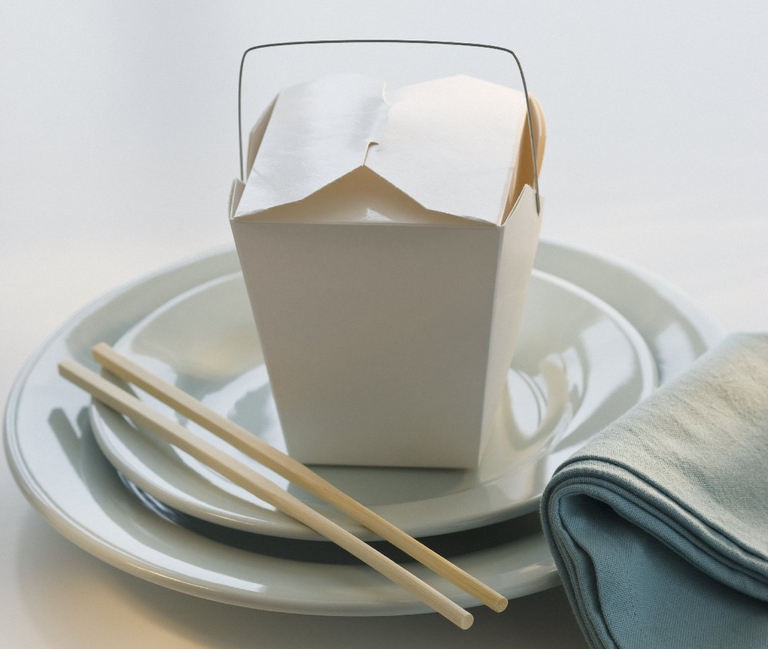
Factory farming conditions and antibiotic-resistant pathogens emerging as a result of them pose an existential threat to humans in the form of zoonotic diseases. Why it’s time to produce and consume food more thoughtfully.
On New Year’s Day a new law came into effect in France striving to cut down on food waste. Even though the world is producing more than enough food for its inhabitants, hunger is still one the most pernicious problems to solve globally according to the FAO. The new law obliges restaurants with over 180
On New Year’s Day a new law came into effect in France striving to cut down on food waste. Even though the world is producing more than enough food for its inhabitants, hunger is still one the most pernicious problems to solve globally according to the FAO. The new law obliges restaurants with over 180 covers a day to provide a doggy bag, a container to take home the leftovers of one’s meal, to any customer requesting one. A regional government survey conducted in 2014 found that even if three quarters of French people are open to the idea of doggy bags, 70% have never taken leftovers home with them. The government wants to reduce the seven million tonnes of food thrown away each year in the country, in which 3.5 million people depend on free meals handed out by charities.
It seems Romans began adopting the practice in the 6th century BC by wrapping leftovers in clean napkins, considering it rude not do so as it was seen as a sign of appreciation of the meal. During the Middle Ages this habit changed and the leftovers went to kitchen staff, then to lower orders of servants and ultimately beggars in the courtyard.
The doggy bag is a common phenomenon in the United States, at least since the 1940s when, during the war, food shortages were a fact of daily life and pet owners were encouraged to feed their animals with table scraps. During the 1970s it became increasingly popular also thanks to the success of fast food chains. Nowadays, instead of requesting a doggy bag it is more polite to ask to “carry out” or for a “to go box”. Even better than that, waiters themselves will commonly ask if you want your food wrapped up, which avoids the slight embarrassment of asking yourself.
British consumers, even if more reticent, follow the American example, perhaps to offset the huge amounts of food waste produced in the UK: more than 14 millions tonnes per year according to Eurostat. Whilst it is perfectly legal to ask for a doggy bag, the Sustainable Restaurant Association (SRA) found a quarter of diners were too embarrassed to ask and 24% believed it was against health and safety policies. It is up to restaurants to offer the service taking the necessary precautions of dating the containers and giving instructions on how to safely store and reheat the food.
In India, China, Malaysia, the Philippines and South Africa it is a widely accepted practice even in high-end restaurants, which use sophisticated packaging. Whilst asking for a doggy bag isn’t illegal in Europe it isn’t common either, mainly for cultural reasons. Chefs aren’t happy if their perfectly prepared coq au vin is spoiled in a box and reheated in a microwave the next day. Restaurants claim that food is made to order and be eaten on the spot, and the portions are adequate and not as huge as in the United States. Diners feel uncomfortable asking for doggy bags as this can be considered a sign of pennilessness, bad manners, or even vulgarity: Europeans look at food left on the plate as scraps, not leftovers, so asking to take them home is considered rude.
However, perhaps because one third of the world’s food production is wasted annually according to the UN, or because of the economic crisis faced in the last few years, European habits are slowly evolving towards a more conscious treatment of food. Better-designed doggy bags are being made all over the continent to try and overcome cultural reticence towards the practice. Campaigns like Doggy Bag – Eat your Leftovers in Italy, Gourmet Bag – C’est si bon je finis à la maison! in France and Too Good to Waste in the UK are strongly working towards the same objective: encouraging this new, sustainable habit. So, next time you go to the restaurant, reduce your foodprint and think how delicious the leftovers will be tomorrow.
Siamo anche su WhatsApp. Segui il canale ufficiale LifeGate per restare aggiornata, aggiornato sulle ultime notizie e sulle nostre attività.
![]()
Quest'opera è distribuita con Licenza Creative Commons Attribuzione - Non commerciale - Non opere derivate 4.0 Internazionale.
Factory farming conditions and antibiotic-resistant pathogens emerging as a result of them pose an existential threat to humans in the form of zoonotic diseases. Why it’s time to produce and consume food more thoughtfully.
The world of cinema recognises the link between food choices and the climate crisis by offering vegan menus for awards season events, including at the most important of them all: the Oscars.
Let’s look at the reasons behind the growth of veganism in India, as a small yet vocal section of the population turns towards this diet and lifestyle in the largest milk producing country in the world.
by Jeffrey Y. Campbell, Manager of the Forest and Farm Facility at FAO In the Ecuadorian Amazon, Kichwa farmers grow dozens of products on tiny parcels of land. Their lands hum with biodiversity, yielding nutritious foods that have sustained families for generations. Wandering among fruit and nut trees and crops, these indigenous agroforesters fill their baskets
Mint has many health benefits, but in food it’s often accompanied by artificial green colourings. Instead, Galatea has created a green mint ice cream in a completely natural way.
We’re talking about Galatea, a company that produces semi-finished products for artisanal ice creams using high quality ingredients, natural colouring, excluding thickeners and hydrogenated fats, respecting the environment and supporting the less fortunate.
The mad rush to fake food, like fake meat made with genetically-modified soy, ignores the importance of the diversity of our foods and culinary cultures. It’s a recipe to accelerate the destruction of the Planet and our health.
Like with all foods, the quality of an ice cream can be discerned by reading its label. An expert explains how to do this, and tells us how their company steers clear of chemicals, using only natural ingredients to produce an excellent and “free” ice cream.
Quality ingredients, no artificial colouring and hydrogenated fats. These are the main features of a great ice cream. But what makes an ice cream parlour “good”, i.e. sustainable?









